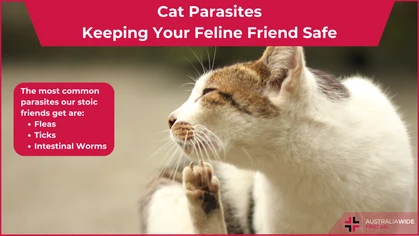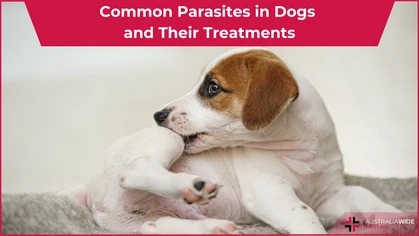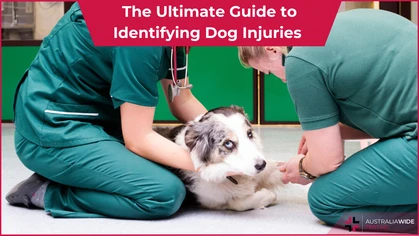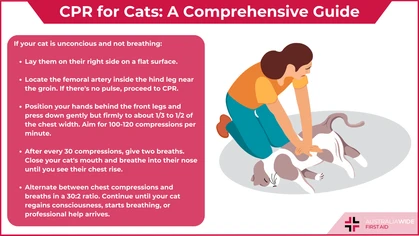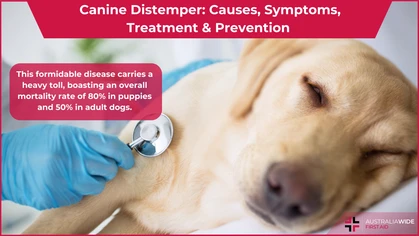Pet First Aid: How to Treat Choking in Dogs

Pets
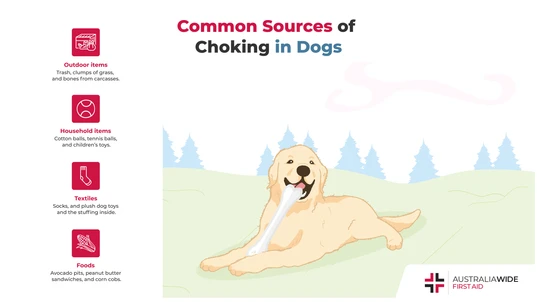
Dogs are incredibly curious creatures, and they often use their mouths to navigate and understand their surrounding environment. This can lead to complete or partial choking episodes, which can result in serious injury or death if left untreated.
Dogs use their mouths for more than just chewing food. They use it to explore, comfort, and play. When an object gets stuck in its throat, it can lead to complete or partial choking episodes. In complete choking episodes, the airway is closed, the dog cannot breathe, and it is an emergent situation. In partial choking episodes, the dog can still move air in and out of its lungs, but it is severely impaired, or there may be an injury to the oesophagus and trachea.Common Sources of Choking
Choking hazards can be found in and outside the home. Some objects, like corn cobs, are choking hazards because of their shape. Other items become choking hazards once they are chewed, like clumps of mowed grass. Below are some of the most common choking hazards for dogs:- Outdoors items: Trash and litter, clumps of grass, and bones from carcasses.
- Household items: Tampons, cotton balls, tennis and table tennis balls, and children’s toys.
- Textiles: Socks, underwear, and plush dog toys and their stuffing.
- Foods: Avocado pits, peanut butter sandwiches, corn cobs, and rawhide bones.
Signs and Symptoms
The most challenging part of treating a choking episode in dogs is identifying that it is happening. Unlike humans, who can use the universal ‘hands around neck’ sign to indicate that they are choking, dogs rely on their abilities to expel the foreign object. For that reason, dogs will show signs of distress quickly after experiencing airway obstruction as they try to dislodge the object. You may notice the following signs as your dog works to release the obstruction himself:- Pawing at the mouth
- Drooling
- Yawning
- Vomiting
- Gagging
- Wheezing
- Frantic behaviour
- Increased respiratory effort
- Loss of consciousness
Treatment
If you believe your dog is choking, think quickly about the source. Observe your surroundings. Are there remnants of a chewed dog toy in the living room or a splintered bone in the field? These indicators will help you determine what your dog is choking on. Take your dog to a safe and calm space. Allow the dog to sit, stand, or lie down, as they will follow their instincts to aid their breathing efforts. Look in the mouth using a flashlight. If you can see the blockage, complete a finger sweep to remove it. Be careful not to push the object further into the throat. If you can feel the borders of the blockage from the outside of the throat, squeeze the neck below the blockage and slowly push upward. Take note of the colour of the gums. The dog is experiencing total airway obstruction if they turn pale or blue. Be prepared to administer CPR. If your dog stops breathing, it is time to initiate CPR.Cardiopulmonary Resuscitation (CPR)
First, check for a heartbeat or pulse by placing a hand on the dog’s chest behind the left elbow. Count the beats for 1 minute or count for 10 seconds and multiply by 6.Has a pulse but is not breathing
Provide rescue breaths. Lay the dog on his side. Completely close the dog’s mouth and breathe into the nostrils. Ideally, you will see the chest rise and fall with your breaths. If the airway is completely blocked, you may not be able to deliver rescue breaths. However, sometimes the muscles surrounding the airway relax when the dog loses consciousness, which may allow you to deliver air to the lungs.No pulse, no breathing
Begin chest compressions. Lay the dog on his right side. Place hands over the area of the heart or the widest part of the chest. Put one palm flat against the chest and the other hand stacked on top. Lock your elbows and adjust your shoulders directly above your hands. (Note: for very small dogs placing one hand completely around the chest and squeezing will suffice) Compress by pushing over the heart area 1-2 inches deep or approximately 1/3 the width of the chest. The goal is to push blood out of the chambers of the heart. Allow the chest to recoil completely before the next compression. This allows the chambers of the heart to refill with blood. In any provision of first aid and CPR, the dog may bite. A dog’s behaviour during painful, stressful, or emergent situations will be unpredictable. Take care to protect yourself and take the dog immediately to a veterinarian if they are acting aggressively.
Stuffing from dog toys is a common cause of choking in dogs. As such, once a dog toy has been torn open, discard it immediately.
Prevention
Preventing a choking episode is the safest option. Discard dog toys once they have been torn open. Keep trash and plastics out of reach. If you have a dog with a history of choking on toys, try to keep small toys sequestered in a play area. If your dog engages in compulsive chewing behaviours due to anxiety, ensure they have access to plenty of fresh, safe options and discard them if the structural integrity has been compromised.Conclusion
In many cases, it is most appropriate to take your dog immediately to a veterinarian if you see that they are choking. Veterinarians can take X-rays to identify the object and will be able to provide effective CPR. However, if your dog is experiencing a complete airway obstruction and time is limited, knowing how to effectively remove the obstruction or provide CPR could save your dog’s life.
Originally published at
https://www.australiawidefirstaid.com.au/resources/how-to-treat-choking-in-dogs
as part of the Australia Wide First Aid Articles Library




